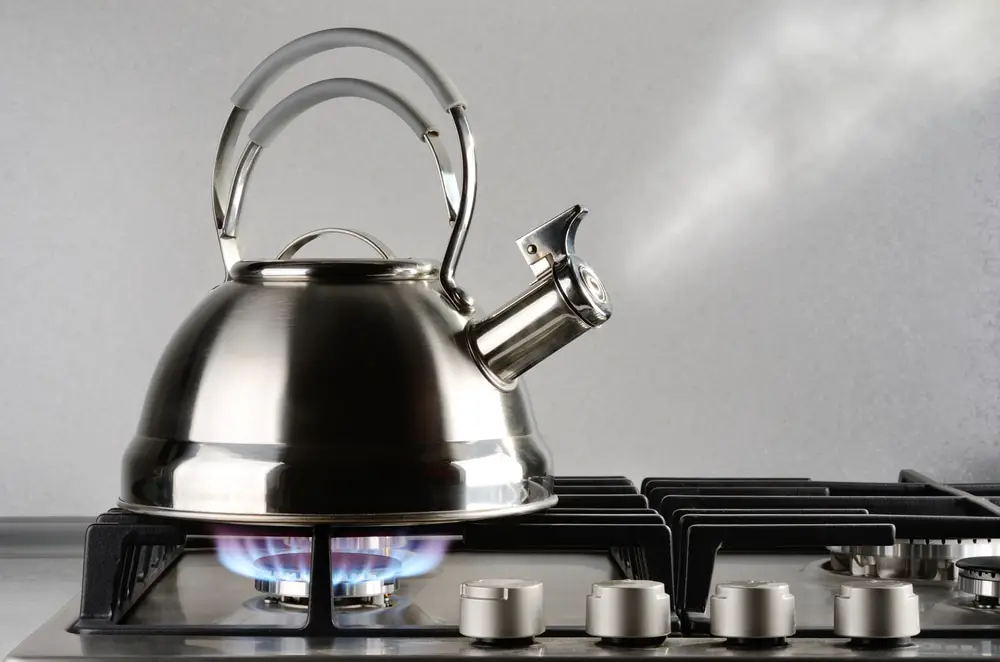Last Updated on May 31, 2021
Love tea and want to know about the history of the kettle? In this article, we’re sharing heaps of kettle history, who invented the kettle, where they came from, and more about their original design.
The Earliest Types of Tea Kettles Invented
The first kettle in history was between 3,500 and 2,000 BC, where people used kettles made from bronze with decorative sprouts. Fast forward to the 19th century; kettles were designed from iron, which then became a popular material to use in kettles next to hit the market.
The First Kettle Invented
The first electric kettle was invented in 1891 in the United States by Carpenter Electrical Company. This electric kettle took nearly 12 minutes to boil water since the elements were located in separate chambers. One hundred one years later, The Swan Company redesigned a new electric kettle that consisted of a metal tube sealed inside and placed within the water chamber. It boiled much quicker.
Electric Kettle
The first electric kettle, developed by inventor Arthur Leslie Large in 1922, plugged into an electrical outlet instead of sitting on a heating element on a stove like previous models. So making tea was easier and less crowded in a kitchen area. And you could keep the kettle on the stove while someone else is preparing dinner.
Automatic Kettle
The automatic kettle came onto the scene in 1955 and was designed by William Russell and Peter Hobbs by a company titled Russell Hobbs. Titled as K1, this automatic kettle was overtaken by the next model, called the K2, which boasted a more elegant, sleeker design. It was made from copper and sported a curvy design that was finished in polished chrome.
Whistling Kettle
The whistling kettle was created by Harry Bramson. This type of kettle features a device that creates an audible whistling sound once the water inside reaches boiling point. The movement of steam pushing through the device creates a vibration, which then produces a sound.
When Did the Kettle Become Popular?
It wasn’t until the 18th century that people in Britain began drinking tea, which was an expensive drink imported from Asia. It was a drink only for the wealthy, and the cups and appliances followed—often with cups made of silver.
The British East India Company started trading with China directly, having a clear focus on tea, which then become more available. As a result, tea became more popular and obtainable with people from all classes. In fact, there was even a tea kettle introduced in the market that was specifically designed for tea drinkers, designed of copper—known for its durability and heat conduction.
Features of a Smart Kettle
Now, in this modern era, which is highly influenced by technology, there’s also the smart kettle to consider. This invention comes with several impressive features, starting with the kettle’s connectivity to a phone app. Once connected to an app, you can control the temperature that the water boils at, including setting a timer for it to switch on automatically. Therefore, you can schedule a cup of tea in the morning or when you finish work without having to be close to the appliance.
Furthermore, smart kettles allow you to measure the amount of water within the appliance accurately. You can even break this down into cup measurements to work out the exact amount of water you need to boil for the number of teas you want to make.
Most impressively, there’s even a smart feature where your kettle has a sensor and can hear when you open the front door. So it’ll begin the boiling process once you arrive home. This feature might feel a little invasive for some people, but it could also be extremely useful.
Cast Iron Kettles vs Copper Kettles
In most working-class households, kettles were made of cast iron or enamel. But in more well-off households, the tea kettle was made from copper. But, since metal can get hot, people would use a folded cloth on the handle to make it safer to hold.
What Do You Know About Early Kettles?
Although this information may not affect how you use your kitchen appliance, it’s always interesting to know who invented the kettle and where it came from.
We hope you have enjoyed learning more about our beloved water boiling machine.
Additional Resources
- What Is A Warming Drawer
- What Is a Range Cooker
- How Does an Air Fryer Work
- When Was the First Electric Hand Mixer Invented
Nicole has a passion for everything about the home – especially decor. She loves to add new touches and style to every part of the house. Join her as she documents her ideas at Home & Style.


Tell us more about athur lesley ward. Who was he?